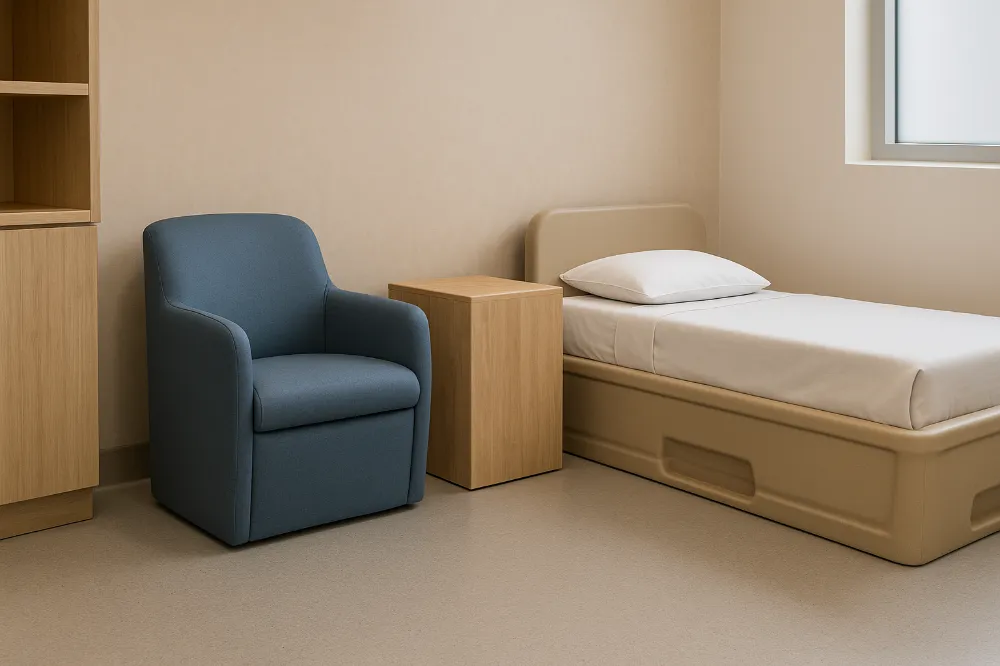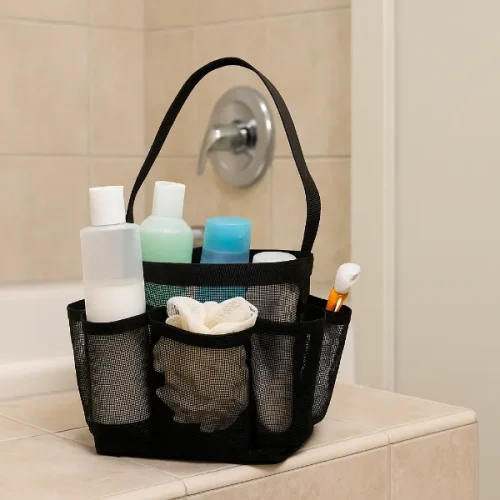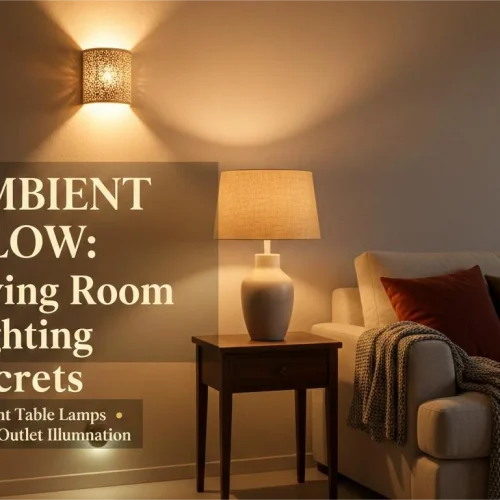
Facility managers in healthcare settings carry a big responsibility. Chief among them is the need to create a safe, functional, and calming environment for both patients and staff. In behavioural health facilities, the furniture you select is vital in helping you achieve this balance. That is because every item must support healing, provide safety, and comply with strict healthcare standards. From anti-ligature furniture to durable, easy-to-clean materials, each piece needs to be carefully chosen. After all, not only does it have to meet the needs of patients. It must give staff confidence in their workspace, too.
This is where taking the time to plan what health furniture to get and where to get it from is of the utmost importance. Undoubtedly, it is best for managers to use a structured approach to help them make smarter decisions, avoid costly mistakes, and meet safety and design regulations. To help them do that, we’ve put together this guide. It offers them a practical checklist to simplify the procurement process for behavioural health furniture. In it, we’ll cover what to look for, how to ensure the furniture is up to code, and how sourcing it from trusted specialists is essential to creating supportive and secure spaces.
The Importance of Choosing the Right Behavioural Health Furniture
In a behavioral health setting, furniture is very important. Indeed, every piece contributes to how patients and staff interact with the space. That’s why it’s vital to work with behavioral health furniture specialists who understand the unique needs of these facilities.
Unfortunately, the wrong furniture choice can create unnecessary risks that can have deadly consequences. That is why any piece of furniture selected must be able to reduce harm, prevent tampering, and promote a sense of calm. Anti-ligature furniture, for example, helps limit self-harm opportunities. Additionally, the materials used are important as they need to be durable, easy to clean and made from smooth, non-porous surfaces that eradicate the potential for infection to spread. Aside from being safe, facility managers must also choose pieces that offer patients a sense of dignity. Ultimately, the goal of any setting is to make rooms feel welcoming and not clinical.
What Should Facility Managers Look for When Buying Behavioural Health Furniture?
Before you purchase anything, it is worth taking the time to fully understand what you need. The best way to do this is to assess your facility’s layout and your patient’s needs. In particular, ask yourself how the furniture will be used on a daily basis and whether it fits with the overall mental health facility design. Behavioral health environments require furniture that is durable and can withstand the impact of heavy use. That is why it is a good idea to choose items with tamper-resistant fixtures and reinforced frames that stand up well to wear and tear.
All items should be also have anti-ligature properties to minimize the risk of self-harm. This includes rounded edges, concealed hardware, and secure fastenings, along with soft, smooth finishes that protect patients and are easy for staff to maintain. Overall, the most effective behavioral health environments feel supportive and calm. So, be sure to look for ergonomic seating, warm tones, and natural materials where possible.
What Is a Healthcare Furniture Procurement Checklist and Do I Need One?
As you can see from the above section, there is a lot to consider. So, to help you ensure that nothing slips your mind, it is worth putting together a furniture procurement checklist for your facility.
This checklist will act as your roadmap. It should guide you through the entire process of procuring new furniture, all the way from the initial planning stage to their installation. With a comprehensive checklist, you can evaluate your options confidently, compare suppliers effectively, and guarantee each piece of furniture meets the high standards required in behavioural health environments.
Here’s what to include:
- Define the project scope – Identify which areas need furnishing and set out clear design goals.
- Conduct a facility risk assessment – Check for areas where patient safety could be compromised.
- Research anti-ligature and tamper-proof designs – Confirm that each product limits opportunities for harm.
- Verify compliance certifications – Ask for documentation showing adherence to hospital and mental health regulations.
- Evaluate supplier experience – Choose vendors with proven experience in behavioural health environments.
- Review materials and finishes – Pick durable healthcare furniture that resists damage and infection.
- Plan installation and maintenance – Schedule professional installation and set regular inspection timelines.
- Set your budget and timeline – Consider not just upfront costs but the long-term maintenance value.
If you follow this checklist, it should help you to pick the right behavioural health furniture for your practice.
Key Considerations for Facility Managers
When deciding which furniture to purchase, it is important to maintain good communication lines. This includes collaborating with staff, designers, and healthcare specialists to make sure everyone’s needs are met. In this regard, input from nurses and maintenance teams will be particularly useful as it will help identify and address their practical concerns before its too late. You might also want to evaluate the flexibility that modular healthcare furniture might bring you. The benefits of modular systems are that they make it easier to reconfigure spaces as patient needs evolve. They also simplify cleaning and maintenance routines.
Additionally, it is worth considering trauma-informed design. This approach uses soft colours, warm textures, and comfortable shapes to promote calm and reduce stress for patients. Indeed, if you combine them with durable, tamper-resistant materials results, you’ll go a long way towards creating an environment that feels secure yet welcoming. Lastly, and perhaps most importantly, always choose reliable suppliers. Established vendors understand the complexities of mental health facility design and build their furniture accordingly.
FAQs
Behavioural health furniture is designed to enhance safety, comfort, and durability in mental health and healthcare facilities.
Anti-ligature furniture minimizes self-harm risks by eliminating points where items can be attached or tampered with.
Durable, non-porous, easy-to-clean materials like solid surface or laminate are ideal for infection control and safety.
It promotes healing and calm by balancing safety with a home-like, non-clinical atmosphere that supports dignity.
Key points include safety, compliance, supplier experience, durability, maintenance, and cost-effectiveness.
Trauma-informed designs use soft colors, smooth edges, and natural materials to create calming environments.
Furniture should meet healthcare safety regulations, fire codes, and infection control certifications.
Experienced suppliers understand behavioral health needs and offer products tested for safety and durability.
Modular systems provide flexibility, easy reconfiguration, and simplified cleaning routines for evolving needs.
Regular inspections should be scheduled to identify wear, ensure safety compliance, and maintain a secure environment.













